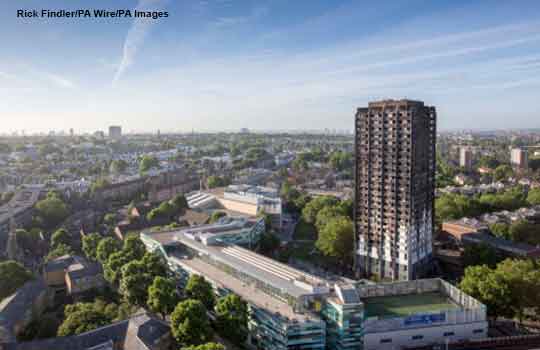 With the nation still reeling from the shock of the recent Grenfell Tower fire in West London, in which so many of our most disadvantaged citizens died, Martin McKee reminds us that the public’s health is fundamentally a political matter. Martin points to the importance of public health in confronting those in power, defining the narrative, and making the invisible visible.
With the nation still reeling from the shock of the recent Grenfell Tower fire in West London, in which so many of our most disadvantaged citizens died, Martin McKee reminds us that the public’s health is fundamentally a political matter. Martin points to the importance of public health in confronting those in power, defining the narrative, and making the invisible visible.
As Theresa May’s fragile administration totters in the aftermath of the recent general election and the stirring of the voice of youth, the receding waters of hubris reveal the broken arrangements for public health that are the legacy of previous health secretary Andrew Lansley. Martin tells us that speaking truth to power has become more difficult since Lansley’s Health and Social Care Bill in 2012, when large parts of public health were moved back into local government. But that is only half of it. Historically in the days when we had a Medical Officer of Health (until 1974) public health in local government was a variable feast, but the best ones were in a position to make a difference. Before the break up and privatisation of local public services, the MOH had a seat at many of the most important tables, from buses to schools, from water to police and fire rescue, and most importantly housing. He (sic) could interrogate and scrutinise all matters affecting the health and safety of the local population. It was a foolish councillor who ignored the sound advice of their own advisor and acted without fear or favour. Under the new arrangements Directors of Public Health are mostly muzzled and their autonomy has often been subordinated to Directors of Social Services.
In recent years the consequences of a headlong rush to entrust public safety to the market have become increasingly apparent. It looks as though Grenfell Tower may be about to bring them to a head.
It is not only at a local level where the system is not fit for purpose. As Regional Director of Public Health in the North West in the early 2000s, I was able to take up the issue of fire safety in the Queensway tunnel, Mersey, with tangible effect. Opened in 1934 and at the time the longest road tunnel in the world, 70 years later it was not fit for purpose. Its inadequacy was exposed by the lethal Mont Blanc tunnel fire in 1999 which killed 39 people. A survey of 30 European road tunnels following the Mont Blanc fire rated the Queensway tunnel, which had a single tube, contraflow with no central protection and no escape routes as “acceptable.” As Director of Public Health I was able to “make the invisible visible” through the local media and within two years Merseytravel was forced to spend nine million pounds putting in escape routes and emergency refuges. When there was a serious collision and fire in the middle of the tunnel in 2006 there were no fatalities. I was reminded of this two weeks ago when I witnessed the deafening pre-emptive silence of local, regional, and national public health agencies with regard to fire safety in tower blocks.
At a national level we have a weak Chief Medical Officer who has no background in public health and provides very little day to day challenge to policy that is relevant to protecting the public. We also have a public health agency—Public Health England—that is limp and a government patsy. Ironically, by being sycophantic to government PHE does the government no favours. Duncan Selbie, the chief executive of PHE recently gave a lecture at the Faculty of Public Health annual conference, where he told the audience that they really should say thank you more often to ministers for implementing policies such as the sugar tax and plain packaging for cigarettes. In doing so Selbie revealed not only his ignorance of the noble tradition of UK public health advocacy, but his primary duty of care to the public, which is to speak evidence to power and raise issues of concern, which require action. Public health must constantly be challenging, and never be in a position where it can be accused of being in the pocket of government. Where was the voice of PHE on fire safety in tower blocks, before, during, or after the event?
So Martin McKee was right to draw our attention to the political nature of public health and to our duty to “make the invisible visible.” It has taken a dreadful disaster to remind us of this enduring truth and of the need for robust and independent arrangements to fight the battles as part of “the organised efforts of society.” Apart from the emergency services, all aspects of institutional public health and its political masters were shamed by the organised community efforts following the Grenfell Tower fire. The legacy must be a root and branch redesign of public health and health protection in England. In the arrangements that emerge I would hope to see a clear role for primary care where people such as Ahmed Kazmi, the local GP who felt “slightly redundant” in the face of the amazing community response, can take satisfaction from “making the invisible visible” and being in the front line of those “trouble makers for health” who can safeguard their patients from tragedy.
John Ashton is a professor at University of Liverpool, Liverpool School of Tropical Medicine, London School of Hygiene and Tropical Medicine, and visiting professor at a number of other universities. He was regional director of public health and regional medical officer for the North West of England.
